Starting a blog from scratch can seem overwhelming, but with the right approach, it’s entirely manageable and even enjoyable. Whether you’re starting a blog to build a personal brand, earn income, or share your passion, this guide will walk you through the entire process step by step.
Define Your Purpose and Niche
Before anything else, you need to understand why you’re starting a blog. Common reasons include:
- Sharing knowledge or experiences
- Building a professional brand
- Generating leads for a business
- Earning passive income through affiliate marketing or ads
Choosing a Niche
Your niche determines your audience, your content, and your monetization strategy. Choose a niche based on:
- Your interests and expertise
- Market demand and audience size
- Monetization opportunities
- Competition level
Popular niches include:
| Niche | Description |
|---|---|
| Personal Finance | Saving, budgeting, investing tips |
| Health & Fitness | Workouts, diets, wellness advice |
| Tech Reviews | Gadgets, software, tutorials |
| Travel | Destination guides, travel hacks |
| Food | Recipes, cooking tips, restaurant reviews |
| Lifestyle | Fashion, productivity, home decor |
Choose a Blogging Platform

The blogging platform is the software you use to publish your blog.
Popular Blogging Platforms:
| Platform | Pros | Cons |
|---|---|---|
| WordPress.org | Full control, highly customizable | Requires hosting and setup |
| Wix | Easy drag-and-drop interface | Limited scalability |
| Squarespace | Beautiful templates | Less flexible for SEO |
| Blogger | Free and simple | Limited customization |
| Ghost | Minimalistic and fast | Less beginner-friendly |
Recommendation: For full control and monetization, WordPress.org is the best choice.
Pick a Domain Name and Hosting
Domain Name Tips:
- Keep it short and memorable
- Use keywords if possible
- Avoid numbers and hyphens
Hosting Providers:
| Hosting Provider | Starting Price | Key Features |
|---|---|---|
| Bluehost | $2.95/month | Free domain, 1-click WordPress |
| SiteGround | $3.99/month | Fast support, high performance |
| HostGator | $2.75/month | Unlimited bandwidth, free SSL |
Install WordPress and Configure It
Once you have your domain and hosting, install WordPress via your hosting provider’s dashboard. Most hosts offer one-click installation.
Key Configuration Steps:
- Set your site title and tagline
- Choose a clean and responsive theme
- Install essential plugins (see below)
Essential WordPress Plugins
Plugins extend your blog’s functionality. Here are must-haves:
| Plugin Name | Purpose |
|---|---|
| Yoast SEO | Optimize content for search engines |
| Jetpack | Site stats, security, performance |
| Akismet | Spam protection for comments |
| WP Super Cache | Improve site speed |
| UpdraftPlus | Backups and restore |
Plan and Create High-Quality Content

Content is the foundation of your blog. Without valuable content, your blog won’t attract or retain readers.
Blog Content Types:
- How-to guides
- Listicles (e.g., “Top 10…”)
- Case studies
- Product reviews
- Opinion pieces
Tips for Writing Great Blog Posts:
- Focus on solving a problem
- Use clear and simple language
- Structure with headings, subheadings, and bullet points
- Add visuals like images, infographics, or videos
- End with a clear call to action (CTA)
Learn Basic SEO for Blog Growth
Search engine optimization helps your blog rank higher on Google and attract organic traffic.
On-Page SEO Tips:
- Include keywords in the title, headings, and content
- Use meta descriptions and alt text for images
- Link internally and externally
- Optimize URL structure (short and keyword-rich)
Off-Page SEO Tips:
- Guest post on other blogs
- Build backlinks through outreach
- Share content on forums and communities
Keyword Research Tools:
| Tool | Free Version? | Features |
|---|---|---|
| Google Keyword Planner | Yes | Search volume, keyword ideas |
| Ubersuggest | Yes | Keyword difficulty, SERP analysis |
| Ahrefs | No | Extensive backlink and keyword data |
| SEMrush | No | Competitive analysis, rank tracking |
Promote Your Blog
Creating content isn’t enough—you need to promote it.
Promotion Strategies:
- Share on social media (Facebook, Twitter, Pinterest, LinkedIn)
- Build an email list and send newsletters
- Collaborate with influencers or other bloggers
- Repurpose content into videos, podcasts, or infographics
- Use paid ads for fast traction
Monetize Your Blog
Once you have consistent traffic, you can monetize your blog.
Monetization Methods:
| Method | Description |
|---|---|
| Affiliate Marketing | Promote products and earn commissions |
| Display Ads | Google AdSense or media networks |
| Sponsored Posts | Get paid by brands to write content |
| Sell Products | Digital (eBooks, courses) or physical |
| Membership Content | Charge for exclusive content |
Track Performance and Improve

Use analytics tools to monitor traffic, user behavior, and content performance.
Tools to Use:
- Google Analytics: Track visitors and behavior
- Google Search Console: Monitor search performance
- Hotjar: Heatmaps and user recordings
- MonsterInsights: WordPress analytics plugin
Key Metrics to Monitor:
- Page views
- Bounce rate
- Session duration
- Traffic sources
- Conversion rate
ALSO READ: How to Improve Your Sleep Quality for Better Health?
Conclusion
Starting a blog from scratch involves more than just writing posts. It’s about finding your niche, building a platform, creating valuable content, optimizing for SEO, and engaging with your audience.
With time, consistency, and the right strategy, your blog can become a powerful tool for sharing your message and achieving your goals.
Whether you’re blogging for fun, for influence, or for income, every step you take builds toward a platform that can grow with you.







